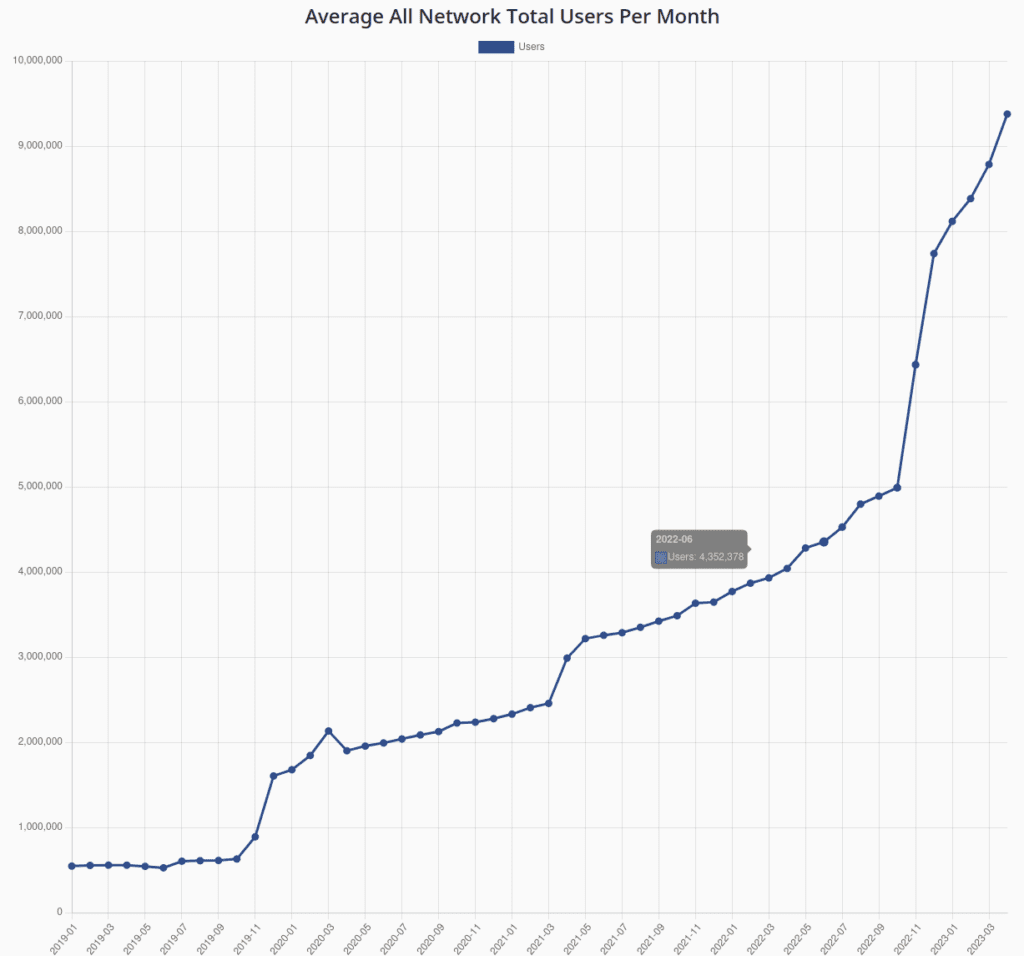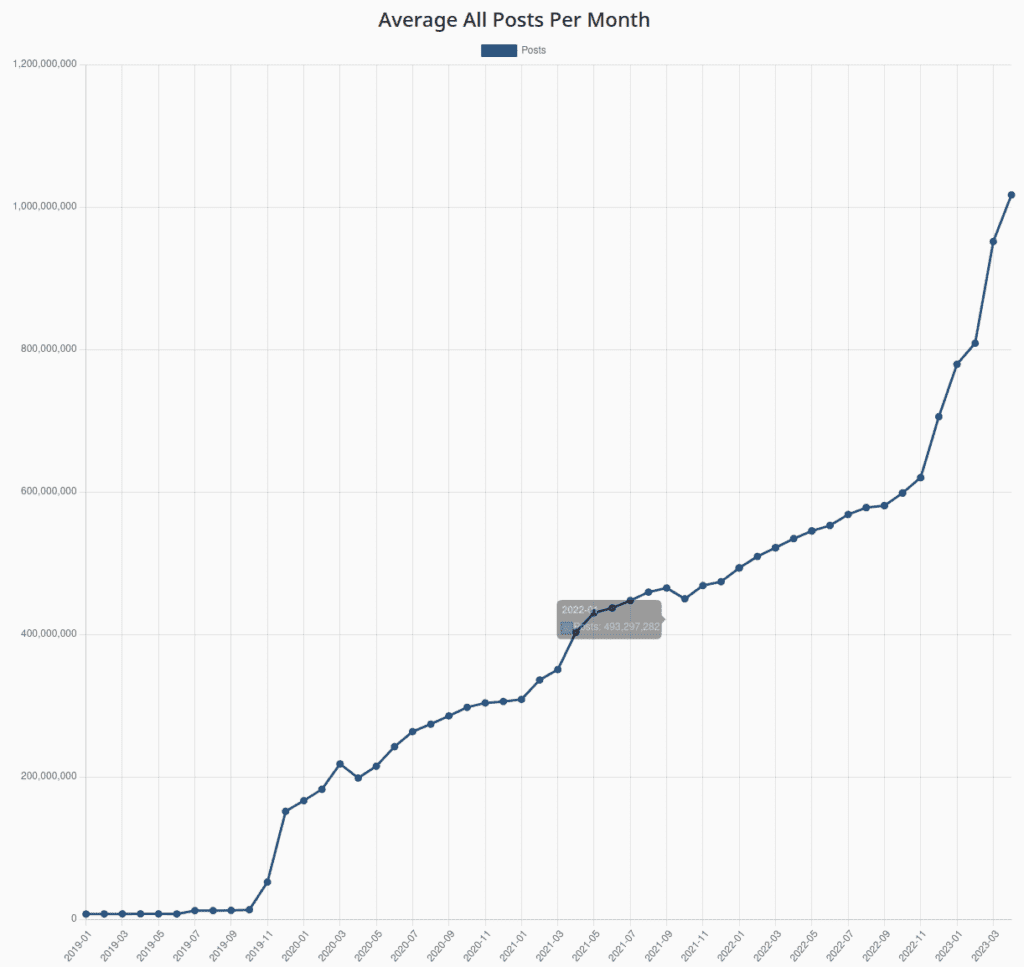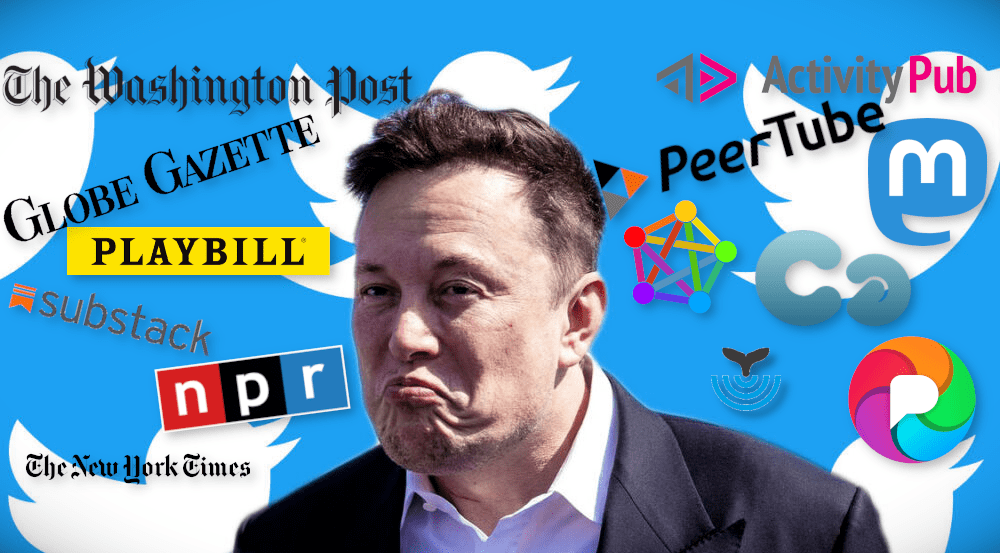Introduction: The Story So Far…
NOTE: This article was started before NPR and PBS decided that it was time to leave Twitter.
I recently emailed NPR regarding the situation with their Twitter account being labeled as “state sponsored”. In said letter, I did bother going through and summarizing all the things that the media has put up with on Twitter in just the five months since Elon Musk’s takeover of the platform. So, here is a summary:
Since the original labeling of NPR as “state sponsored”, Twitter (really Elon Musk) has relented (somewhat) and changed the label to read “Government Funded”. This label has also been applied to PBS. (The Hill: Twitter drops ‘state-affiliated’ label from NPR after backlash) During this whole kerfuffle, one of the better known NPR stations, KCRW, decided to leave Twitter as they felt the platform was no longer a trustworthy.
At the same time, Twitter also started blocking replies, likes, and retweets to posts that contain links to Substack articles (Ars Technica: The dumb reason Twitter won’t allow retweeting tweets linking to Substack). The reason for this is a perceived challenge by a new Substack feature called “Notes” that is similar to Twitter in appearance, but is tied to Substack’s subscription model (The Verge: Substack is getting tweets — err, ‘Notes’).
Meanwhile, it is being reported that Twitter is no longer restricting the reach of Chinese and Russian state sponsored media outlets (Semafore: Twitter is no longer policing Russian and Chinese state-backed media).
And, of course, there is the pettiness of removing The New York Times’s verified check-mark, after the news organization stated they would not be paying Musk’s exorbitant extortion to keep the mark.
But, while the assault on media outlets that has occurred over the past few days should be seen as quite alarming to the media at large, it isn’t even the beginning. All the way back in November, Playbill left Twitter citing an expanded tolerance of hate and misinformation (The Hollywood Reporter: Playbill Leaves Twitter, Says Platform Now Blurs “Actual News and Insidious Rhetoric”). CBS News halted Tweeting for a day because of the “uncertainty” about the platform.
And, in mid-December, Elon banned the accounts of reporters from the New York Times, Washington Post, Voice of America, CNN, Mashable, The Intercept and several freelance journalists over their reporting on his banning of the ElonJet account a few days earlier (The Verge: Elon Musk starts banning critical journalists from Twitter).
And, just a few weeks ago, Twitter permanently banned the 165-year-old Globe Gazette newspaper from Mason City, Iowa without giving any reason. The account was restored a day later, but they lost all of their 6K followers, and were never given a reason as to why they were banned in the first place (Des Moines Register: 165-year-old Iowa newspaper’s Twitter account restored. Why it was banned remains a mystery).
And, even more recently, Twitter blocked 122 accounts at the request of the Indian government. Those accounts included several journalists: Pieter Friedrich, Sandeep Singh, Kamaldeep Singh Brar, and Gagandeep Singh. (rest of world: Twitter blocked 122 accounts in India at the government’s request).
And finally, in the most hilarious turn of them all… The Musk-hired “journalists” Matt Taibbi and Barry Weiss have been either fired or shadow-banned on Twitter. (TechDirt: After Matt Taibbi Leaves Twitter, Elon Musk ‘Shadow Bans’ All Of Taibbi’s Tweets, Including The Twitter Files).
Re-Interpreting The Substack Story
While I initially interpreted the Substack story as just another of Elon’s odd little petty tantrums against a company offering a new feature to compete with Twitter, I’ve re-evaluated that perspective. The fact is, his tantrum was about more than just the Notes feature. The new offering from Substack served to directly undermine Elon’s plans for his “Twitter 2.0”.
It has been widely reported that Musk is seeking to turn Twitter into his vision of an “Everything” app. This has been something of an idea that goes back to his early days when developing what later became PayPal. And recently, he has signed an agreement with eToro to expand Twitter’s offerings in financial areas, like stock quotes, crypto market tracking, etc.
But what does this have to do with Substack? While not as apparent at first, Notes cuts deeper than it first appears. Elon wants Twitter to do everything: that includes publishing, and he has been taking steps to make this a reality.
First, sometime back, he announced that there was going to be a system for creators to get payouts. Then he expanded the size of Tweets and Videos for Twitter Blue subscribers. And, just in the last week, he announced large Tweets with a 10,000-character limit, and support for italics and underlining.
When you put all of these things together, it looks more and more like part of the system he was building was going to try to compete with Substack. And that lead him to make retaliatory moves against Substack when they added Notes: he saw that as an attempt to draw potential users of his publishing platform away.
Inflection Point
That was just an introduction to what Twitter has become where news media is concerned, since Elon Musk’s takeover. It’s a long way from the platform that was once described as the “public square” or the “town hall of the internet”. In fact, it appears that in his ideal world the journalists and reporters will turn to him to publish their work, instead of just using the platform to circulate works that are created on other (competing) platforms.
Elon’s Twitter is about controlling communication. Gaining Elon’s favor is the way to give your message a chance to be heard. And the best way to gain his favor is to (a) pay for the privilege, (b) not be critical of his statements and actions, and (c) make certain there isn’t someone else he favors more than you.
This is the absolute antithesis of the foundations of the free press. Elon is acting in a manner that is completely contrary to the foundation of American values. America was founded on the premise that we could have a self-governing country that wasn’t afraid of critical voices, and rejected dictatorial leadership.
Throughout the world, most countries have news media that are respected. It’s true that censorship laws, hate speech laws, and other legal barriers to completely independent news media do exist. However, for countries where the government does not directly interfere or direct the media, the threat of the current state of Twitter management should be seen as clear and imminent.
It is time for American media companies at a minimum, and global media companies to realize that they cannot and should not rely on the whims of social media companies. We are now at an inflection point. The current social media industry is turning it’s back on the forms of content and communication that the people want and need.
There have already been battles with Alphabet (Google) and Meta (Facebook) over the syndication of their content. YouTube is widely known for taking down content without reason. Instagram, TikTok, and other media companies have numerous issues that make them unreliable sources for independent news media.
Instead of focusing on communication, these companies are becoming obsessed with Artificial Intelligence, and Virtual Reality (aka the Metaverse). Neither of these are technologies that are wanted or needed by the public at large. In fact, the utility of these technologies remains dubious at best. About the only real interest in them that the media should have is in reporting on them.
So, with this inflection point what should media companies be doing?
Leaving Twitter Is The First Step
As I sit here writing this, NPR and PBS have left Twitter. Several NPR member stations have also left Twitter. This is a start, and the best first step to take. It is time to start showing the social media companies that they aren’t needed.
But, just leaving Twitter isn’t enough. It’s time to think in a way that will allow you to be more independent and will allow you to build a presence beyond what you currently have.
What if you could have your own Twitter? Your own Instagram? Your own YouTube? And, how about the ability to have people that are on a Twitter-like platform be able to see the content posted on your website? Or what if these “Twitter-like” users could see your YouTube content?
In other words: what if there were little or no barriers between the platforms? You could publish to as many platforms as you wanted, and your audience could choose how they wanted to consume and interact with your content?
That’s where the next step comes in.
The Fediverse Is The Next Step
You have probably already heard of Mastodon and the Fediverse. You know that Mastodon is a Twitter-like platform that millions of former Twitter users fled to after Elon Musk’s takeover. But Mastodon is only one piece of the Fediverse.
The Fediverse is actually made up of many different platforms… In fact, more platforms than the current commercial social media websites offer. There are currently over thirty platforms available as part of the Fediverse.
And, the Fediverse has been steadily growing over the past 4–5 years. Here’s a graph of the growth in the user base of the Fediverse since 2019:

As you can see, just since Nov. 2022 the number of users has nearly doubled in size. And it does not show signs of stopping, with literally thousands of new accounts created every hour.
And, these users are active too, as witnessed by the growth in posts since 2019, and especially since November 2022:

Now, this is not the biggest growth that any social network has experienced. However, it is very consistent growth. This consistent growth is what should make it an appealing proposition for news organizations to get in on. This is a place where you can start finding your audience now, build and define your presence on your terms.
Defining Your Presence
As mentioned, the Fediverse has many platforms available for any news / media organization to adopt in defining their presence. Here’s a non-exhaustive list of platforms:
- Microblogging (Twitter-like): Mastodon, Pleroma, Calckey, Misskey.
- Macroblogging (Facebook-like): Firendica, Hubzilla
- Video Hosting (YouTube-Like): PeerTube
- Image Sharing (Instagram/TikTok-like): Pixelfed
- Audio / Podcasting (SoundCloud-like): FunkWhale
- Video Streaming (Twitch/YouTube-Like): OwnCast
- News Aggregation (Reddit-like): Lemmy
- Books/Reading: Bookwyrm
And more. Note that the comparisons to other social media platforms are just for reference. Each platform has its own unique flavor and objectives, they aren’t attempts at cloning the commercial products.
There are more options available as well. For example, websites that are built on WordPress or Drupal have plugins available that allow content to be published directly to the Fediverse, and can (optionally) allow responses to that content to be imported as comments on your website.
The really nice thing about all of these platforms: there are existing instances (servers) available that you can use to test out the services. You don’t have to go into Fediverse blind, you can take some time and develop a plan to bring your presence to this much more open, transparent platform.
Developing A Fediverse Adoption Plan
My recent email to NPR contained a brief overview of a plan that could be taken for building a presence on the Fediverse. The point of the plan was to make it a no-pressure situation. Small steps can be taken, and the platforms evaluated in order to make informed decisions that will make for a more successful transition and adoption of the Fediverse.
Let’s take a look at a plan that should help with a successful adoption. Note, however, there is one caveat to any planned migration: don’t compare Fediverse platforms to their commercial brethren. The reason that comparison aren’t useful is they tend to either (a) be skin-deep, and (b) they miss the real depth and usefulness of the Fediverse.
So, with that being said, here are four steps that will help make for a successful transition.
One: Join Some Existing Platforms
Your organization can start making itself known on the Fediverse by using the platforms that are already available. In particular, there are two that are dedicated to journalists and reporters:
These two platforms offer a nice starting environment for Journalists to start interacting with the Fediverse. It might seem to be slow-going at first, but with a nice introduction post, and a few posts about articles they are writing or researching, they are sure to start building a following. Many reporters / journalists from ProPublica are members of Newsie, and they have built followings in the thousands already – even the ones that haven’t posted more than one or two posts.
But, that’s an important point: they need to be active and interact on the Fediverse. There is no algorithm to recommend their accounts to anyone. Making certain they have hashtags relevant to their work in the profile and introduction post will help people find them. But, interaction is the key: being a genuine person and talking to people is the way to get a lot of value from spending time here.
Now, I mentioned Journa.host and Newsie Social for reporters and journalists. But your organization will likely want to have non-journalists join the Fediverse as well. In the “Defining Your Presence” section, I listed off over half a dozen other platforms that some will want to consider joining. I’d recommend sticking to the Microblogging and Macroblogging platforms, although something like PixelFed might be of interest too.
And, a key point to remember: you can always follow people on platforms that aren’t the one you are on. So, if you create an account on Calckey, you can still follow people on Journa.Host and Newsie Social, or any other instance.
There will definitely be some learning curve. But, post frequently, read through some posts under various hashtags, and interact with people, and there will be a tipping point where it all becomes a lot easier, and rewarding.
Two: Distribute Content
There are many ways to go about distributing the content you create on the Fediverse. The easy, less permanent way is to use a bot to read content from RSS feeds and post them to the Fediverse.
There are instances available specifically for this purpose, one such instance is Bots In Space. You can create accounts on this instance for each of your feeds, and set up a key to allow your RSS feeder script to publish new articles to the account. (Setting up these feeds is not something that I can explain easily in this article. However, Mastodon has excellent documentation, and there are numerous articles and examples of publishing from RSS feeds to Mastodon.)
Another way to handle this without having to set up anything is to have someone do it manually. In many cases, this is likely to not be a viable option. However, it could be a viable experiment. Say you chose to have someone post a few articles a day to an “official” account to see what kind of following and feedback they receive.
The final option is to add ActivityPub into your publishing system. Two of the more popular content management systems (WordPress and Drupal) have support for ActivityPub via plugins that are readily available. Automattic, the company behind WordPress, has hired the developer of the ActivityPub plugin and is working to implement direct support into their products.
Three: Setting Up A Fediverse Native Presence
While the first step of having some of an organization’s staff use the current instances offered on the Fediverse is good, extending your organization to the Fediverse itself will have a number of long-term benefits.
For example, starting your own instance of Mastodon or another microblogging platform will allow people from your organization to have a presence that identifies them immediately with your organization. And, that instance allows you to set the standards for communication in the social world (something that is very likely already in place for your organization).
There are more benefits: you will be able to get feedback from your audience. If you choose to, you can have a customer service department as part of your presence. There are a nearly infinite number of options in this area.
But it doesn’t end there. You can add more platforms for other types of content. For example, if you have podcasts, you might want to add a FunkWhale instance. If you have video content, you might want to set up an instance of PeerTube (which would also allow you to import videos that you have already made available on YouTube). If you have a lot of photographic content, you might want to set up a Pixelfed instance.
The options are wide open. You can set up as many platforms as you want, or just have a single platform for social interaction, and use your preferred content management platform to publish your media to the Fediverse.
Conclusion
This has been a roller-coaster of an article. From taking a brief look at all the media related events that have occurred since Elon Musk took over Twitter just six months ago, to diving deeper into the Substack story and understanding where Twitter is going under Elon Musk.
The most logical conclusion is somewhat challenging. Elon is trying to make his “everything” platform, which includes trying to attract amateur writers to publish alongside well respected news and media organizations. And, in the event that a media company isn’t willing to pay the fees that Elon wants for Twitter Blue verification, then those posts are de-prioritized.
(As an aside, something that we didn’t cover in this story is the changes to the API’s. They affect the media too, as many of the tools that are being used likely rely on those API’s for publishing stories. So, in the case of most media organizations, this is an additional cost beyond Twitter Blue.)
This kind of “pay for play” combined with the elevation of many writers that are anywhere from amateur to potentially incompetent is something that news media organizations should not continue to endorse. And sticking with Twitter is endorsing this new “pay for play” model.
What is even worse about this model is that it allows for the elevation of messages that are reflective of the worst parts of society. And, in fact, Elon has shown himself to be perfectly willing to align himself with people that support these kinds of messages. Bringing well respected news media outlets in line with many racists, antisemitic, sexist, and other types of speech.
So, this is the inflection point for Twitter 2.0. Elon’s changes are making it more obvious that there is going to be a very different structure to Twitter – it’s no longer going to be a platform where all voices are equal. It’s no longer where the voices that are elevated are those that the masses deem should be elevated. It’s a place where you can pay to have your voice elevated.
If this is the kind of environment that well respected news and media outlets want to be a part of, so be it. For those that don’t, the Fediverse is waiting. The Fediverse offers the opportunity to engage with an audience that is open and receptive to respectful reporting. It’s also self-moderating, keeping the worst messaging from being on equal footing with the worst messaging out there. And, it’s a place where you can choose how your organization is represented. There are plenty of opportunities in the continuously growing Fediverse.

